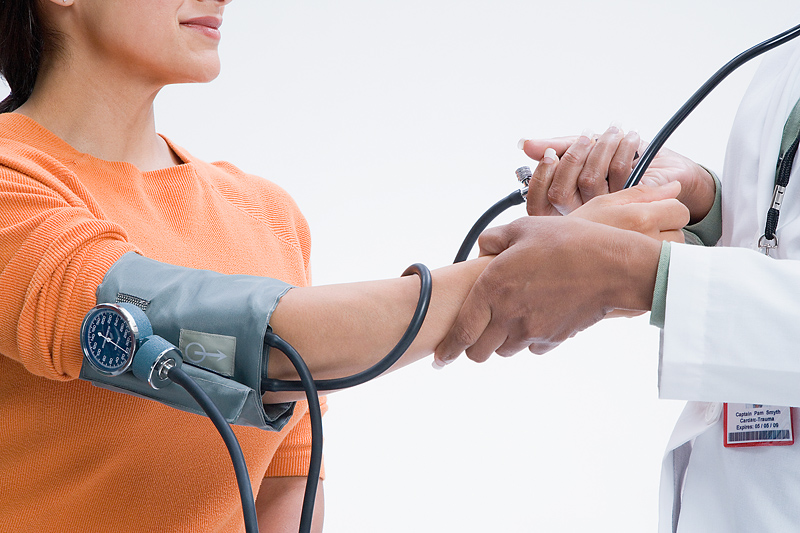MONDAY, Oct. 12, 2015 (HealthDay News) — High blood pressure levels should generally be confirmed with home or ambulatory blood pressure monitoring before starting treatment for hypertension, a new U.S. Preventive Services Task Force (USPSTF) recommendation says.
Many factors can affect blood pressure readings, such as stress, physical activity and caffeine or nicotine, the USPSTF said. And, some people experience “white-coat hypertension” — an increase in blood pressure at the doctor’s office from stress — when having their blood pressure taken.
All of these factors can make it hard to tell if someone really has high blood pressure, the researchers said.
That’s why the Task Force recommends confirming a diagnosis of high blood pressure, or hypertension, before starting treatment, unless someone has very high blood pressure that needs to be treated right away.
“For most patients, elevated blood pressure readings in the doctor’s office should be confirmed outside the doctor’s office before starting treatment,” said Task Force vice-chair Dr. Kirsten Bibbins-Domingo.
“For individuals who have very high blood pressure or other health problems, such as heart or kidney damage, that might make it critical to lower blood pressure, this recommendation doesn’t really apply to them. This recommendation is really for individuals where one wants to confirm high blood pressure,” Bibbins-Domingo said.
Blood pressure levels can be confirmed with ambulatory blood pressure monitoring. Your doctor will provide a small, portable device that automatically measures your blood pressure every 20 to 30 minutes over 12 to 48 hours. If this method isn’t available, people can take their blood pressure at different times throughout the day using home blood pressure monitoring, the USPSTF said.
The Task Force recommendations were published online Oct. 12 in the Annals of Internal Medicine.
Ambulatory blood pressure monitoring is the first choice for confirming a diagnosis of high blood pressure, the Task Force said. But, when not available, home monitors are an acceptable alternative.
Home blood pressure monitoring devices can cost from less than $20 to $100 or more, according to Consumers Union. Devices that use upper arm readings — rather than finger or wrist — are considered more accurate, the American Heart Association (AHA) says. But, it’s important that the cuff that wraps around your arm fits properly, the AHA advises.
The dangers of sustained high blood pressure include an increased risk for heart attack, stroke, kidney disease and heart failure, the USPSTF said. High blood pressure is a leading cause of death in the United States, particularly among older Americans, Bibbins-Domingo said.
Dr. Gregg Fonarow is a spokesman for the AHA and a professor of cardiology at the University of California, Los Angeles. He said, “Nearly one in three adult men and women in the United States have high blood pressure. However, way too many adults do not have their elevated blood pressure adequately detected and treated, and as a result are at risk for heart attacks and strokes that could have been prevented.”
The Task Force’s recommendations reinforce that it’s essential for all adults to have their blood pressure checked at least once a year, he said. The latest guidelines also emphasize the need to take action to achieve and maintain a healthy blood pressure level in consultation with their doctor, Fonarow said.
“It is well established that systolic blood pressure above 120 mm Hg results in a greater risk of heart disease and stroke,” he said. Systolic blood pressure is the top number in a reading.
“New trial results demonstrate that treating systolic blood pressure to achieve a goal of 120 mm Hg lowers the risk of death from any cause, compared with treating to a conventional goal of 140 mm Hg,” Fonarow said, adding that the USPSTF’s treatment section needs to be updated to reflect this new information.
More information
For advice on selecting a home blood pressure monitor, go to the American Heart Association.
Copyright © 2025 HealthDay. All rights reserved.

